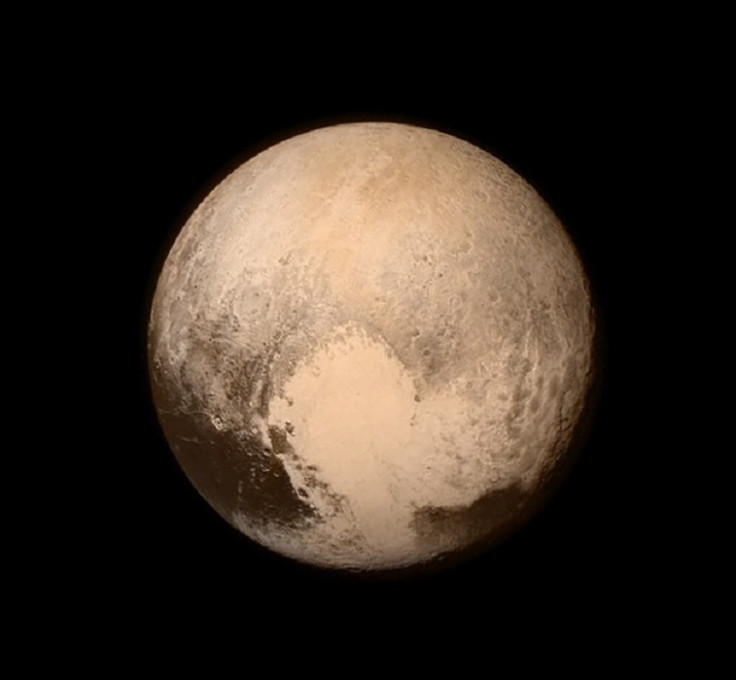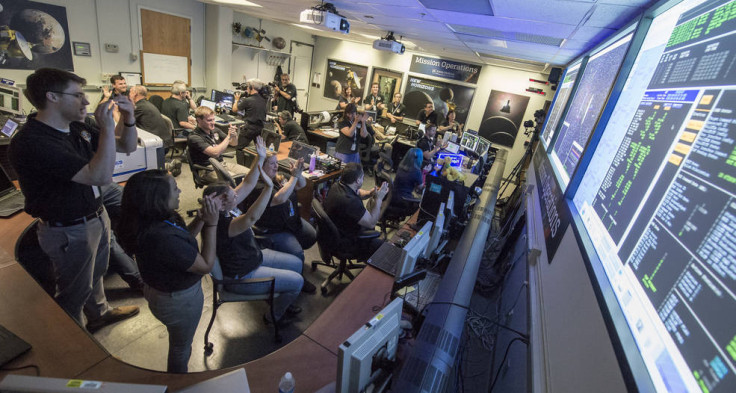Nasa's New Horizons probe survives Pluto flyby and calls home

Nasa's New Horizons probe has made contact with Earth after completing its historic flyby of Pluto.
The spacecraft had stopped transmitting to mission control as it had turned its antennas toward the dwarf planet to gather data during 14 July's flyby.
But the signal received at 12.53am GMT on 15 July confirms the probe has sailed passed its target successfully and it is now set to transmit a wealth of data - including several new high resolution images – on Pluto.
Scientists at the John Hopkins University Applied Physics Laboratory in Laurel, Maryland, cheered and hugged each other as the probe re-established contact with mission headquarters, the BBC reported.

"We are in lock with telemetry from the spacecraft. We have a healthy spacecraft, we have recorded data from the Pluto system, and we are outbound from Pluto," mission operations manager Alice Bowman was quoted as saying.
The post-flyby signal was received by one of Nasa's communication antennas in Madrid, Spain.
New Horizons will now begin sending the data it captured during its flyby of Pluto but given the probe is some 4.7 billion km (2.9 billion miles) from Earth, it will take over four hours for the signal to reach home.
"The expected number of segments on that recorder had been used. That tells us that data has been collected on the spacecraft," Bowman said.
"I can't express how I feel. It's just like we planned it!"
Nasa administrator Charles Bolden said: "I know today we've inspired a whole new generation of explorers with this great success, and we look forward to the discoveries yet to come.
"This is a historic win for science and for exploration. We've truly, once again raised the bar of human potential."
US President Barack Obama congratulated mission scientists and hailed the achievement as "a great day for discovery and American leadership".
Pluto just had its first visitor! Thanks @NASA - it's a great day for discovery and American leadership. pic.twitter.com/FfztBSMbK0
— President Obama (@POTUS) July 15, 2015Hurtling through space at more than 49,600kmph (30,800mph), New Horizons faced a very small chance of being lost during its flyby as collision with any stray ice debris could have incapacitated the probe.

The spacecraft has already sent over remarkable images of the previously mysterious dwarf planet, revealing a distinctive heart-shaped region near its equator and several impact craters on the surface.
The flyby marks a historic moment in space exploration and means all nine major planetary objects in the solar system have now been visited at least once by a human probe.
© Copyright IBTimes 2025. All rights reserved.






















